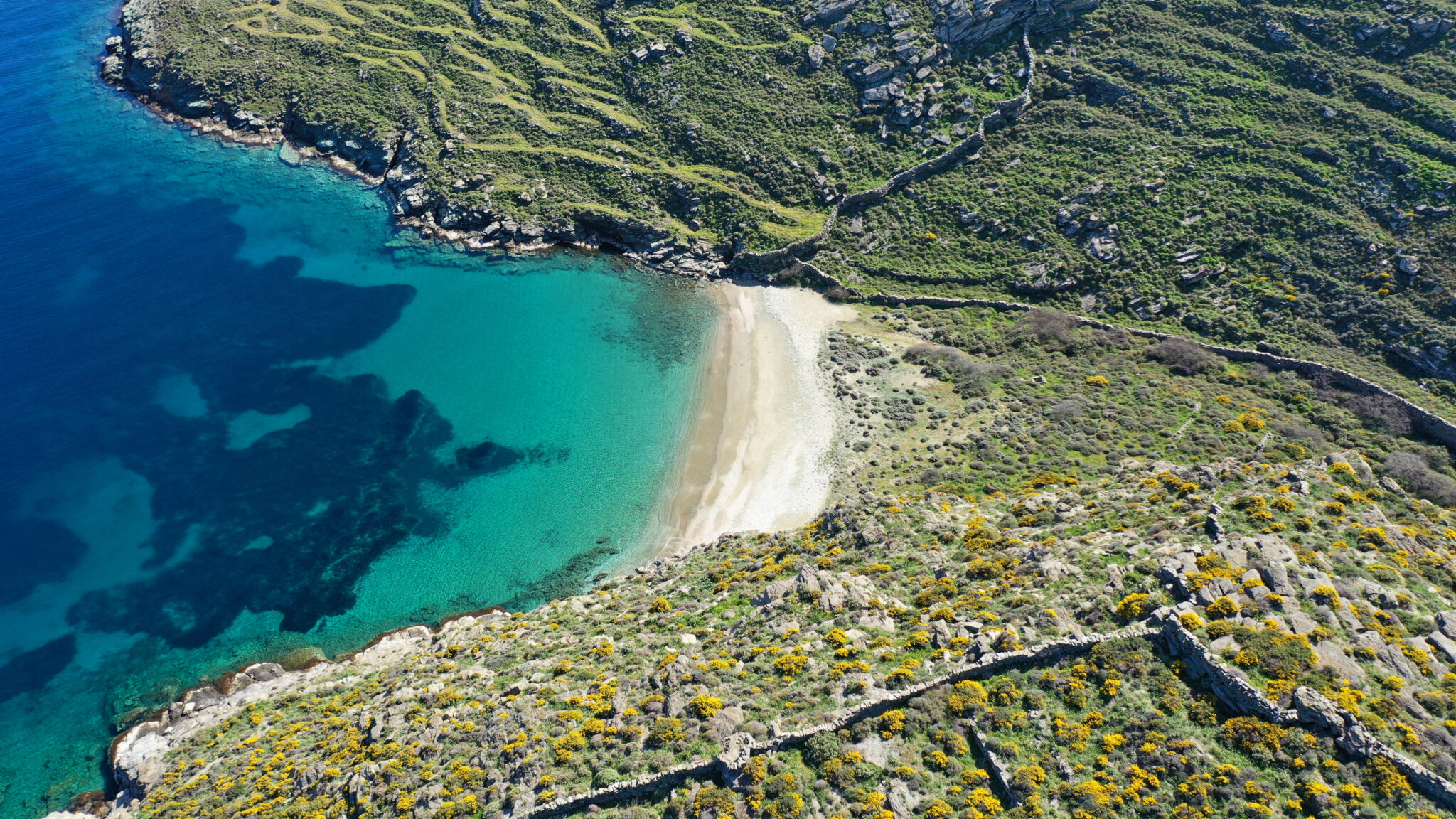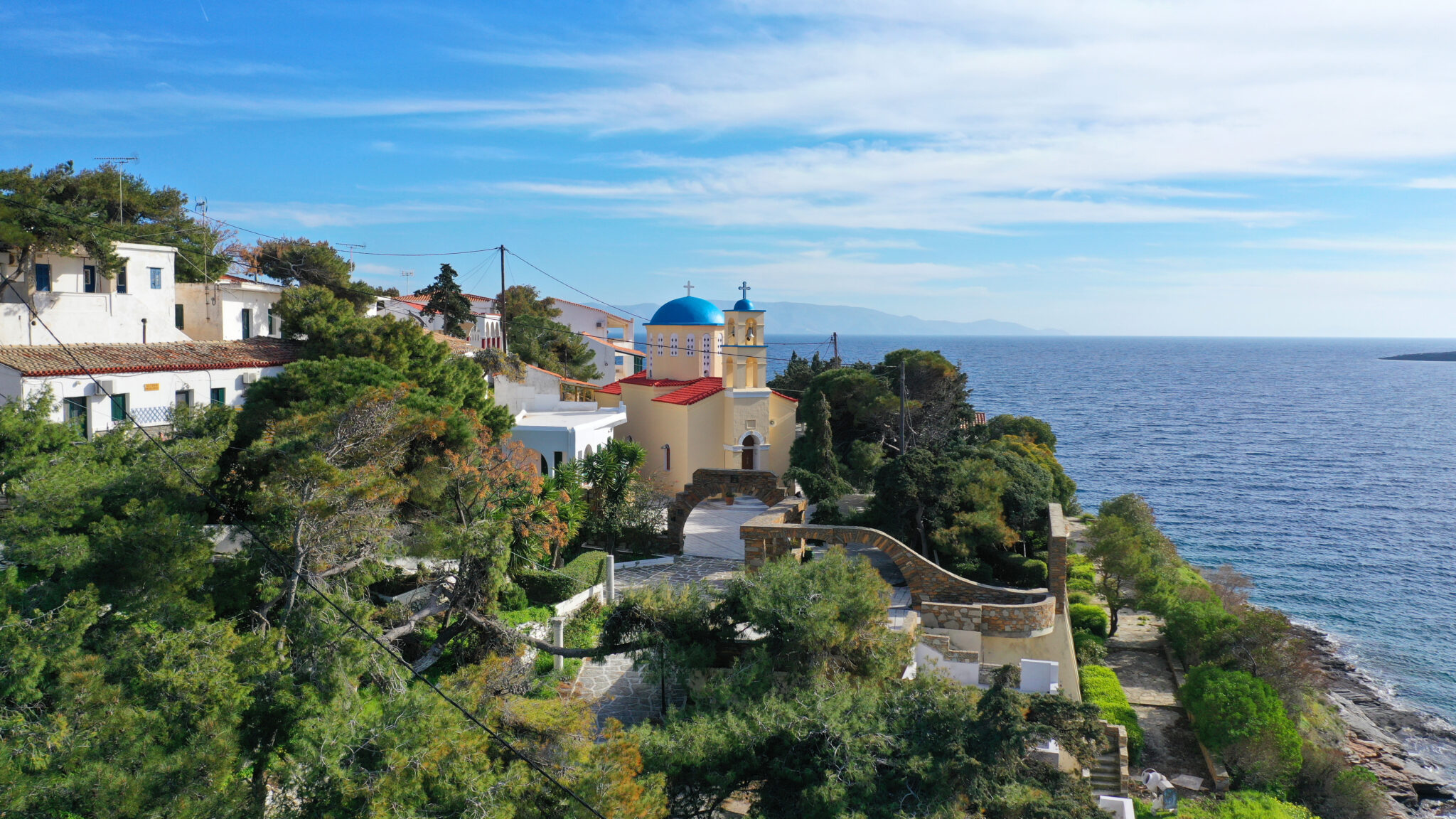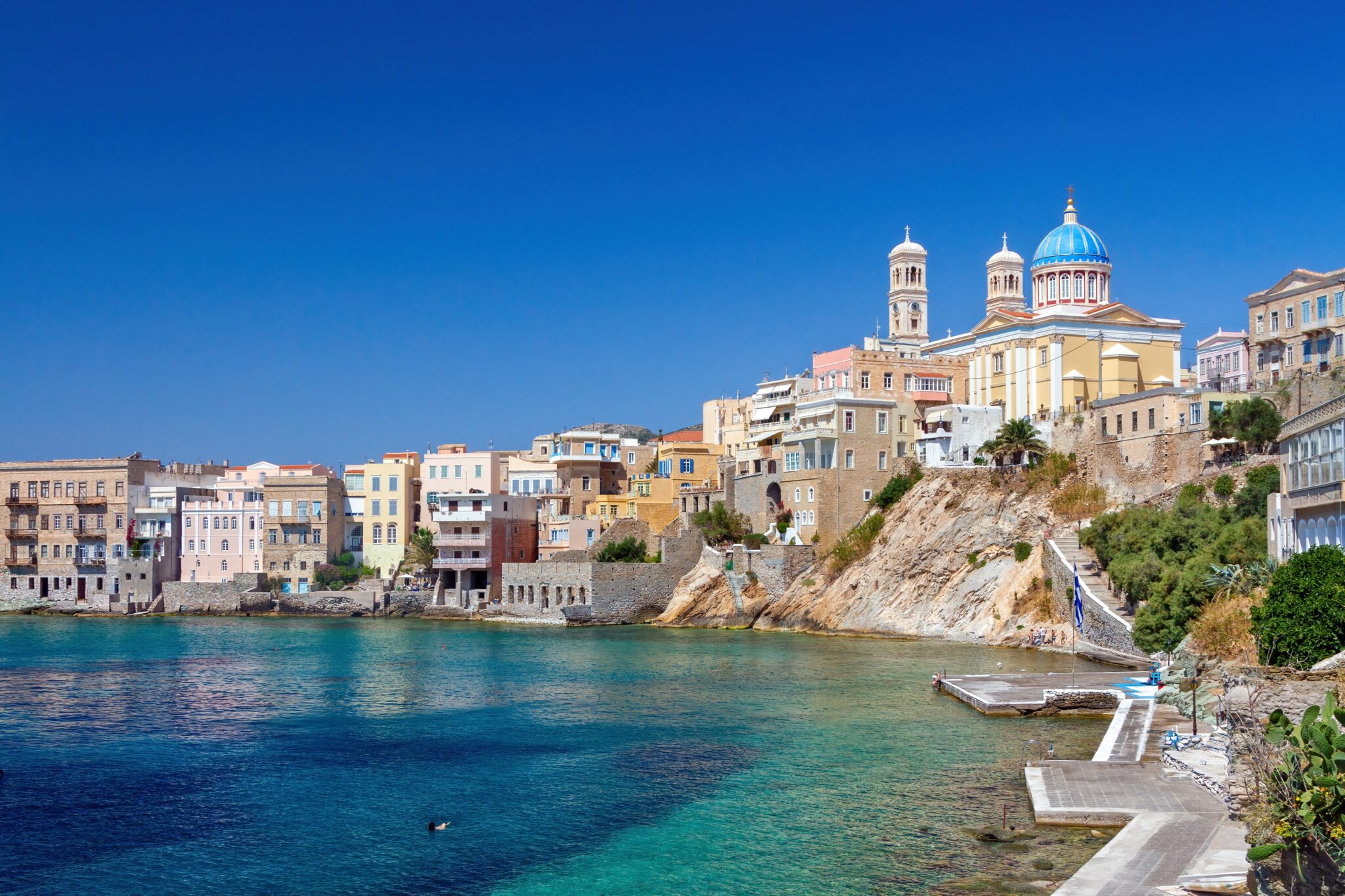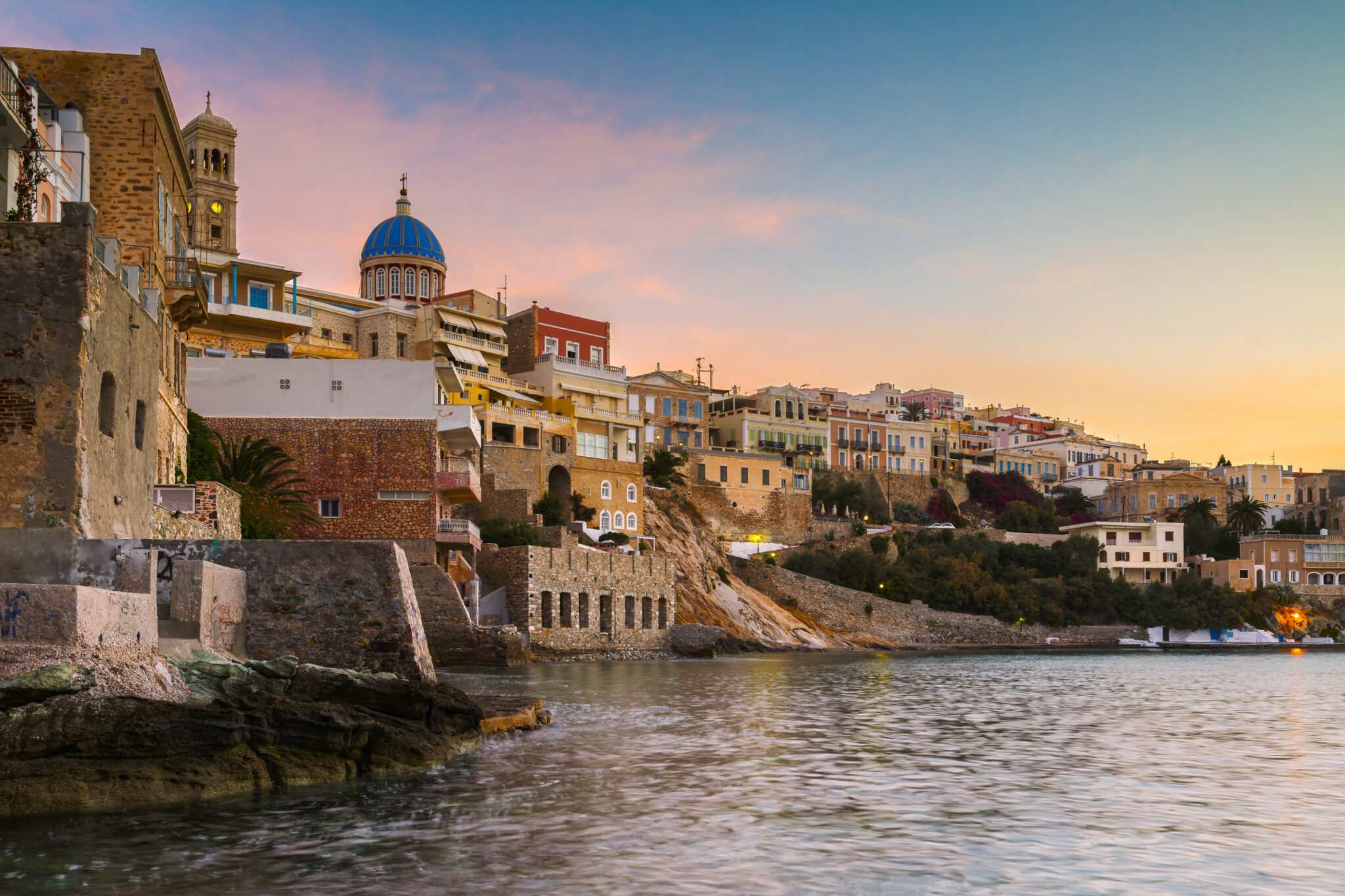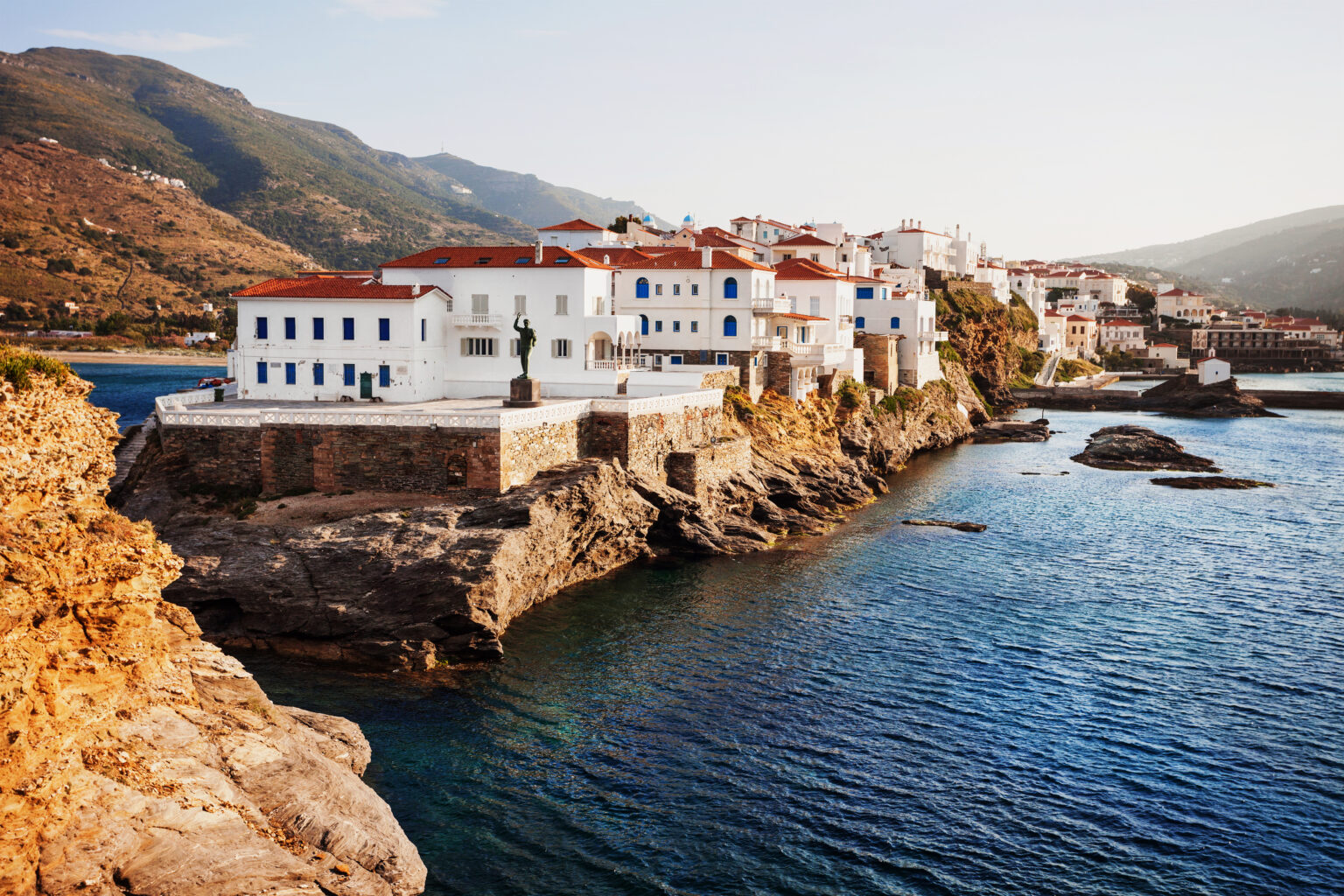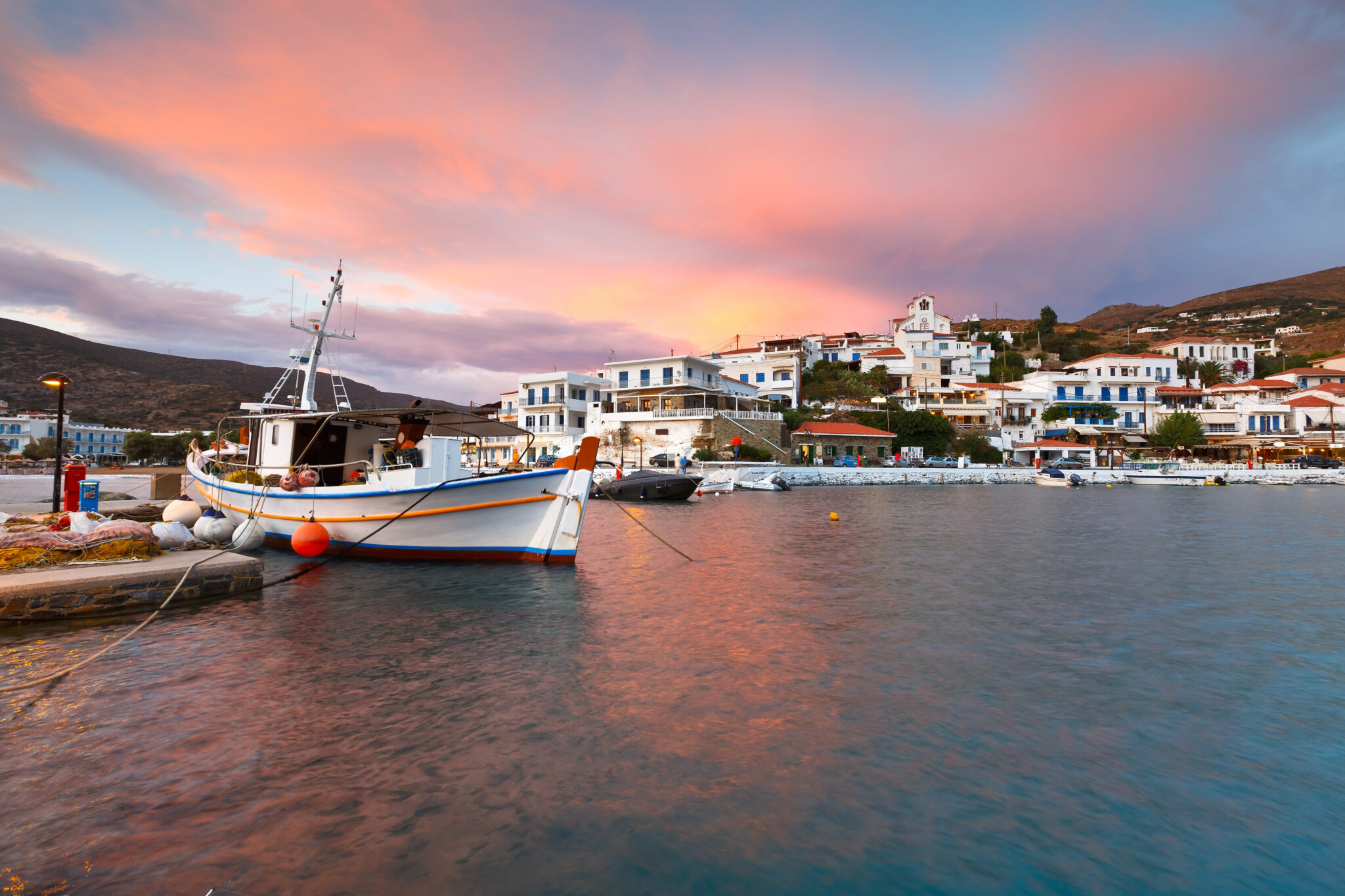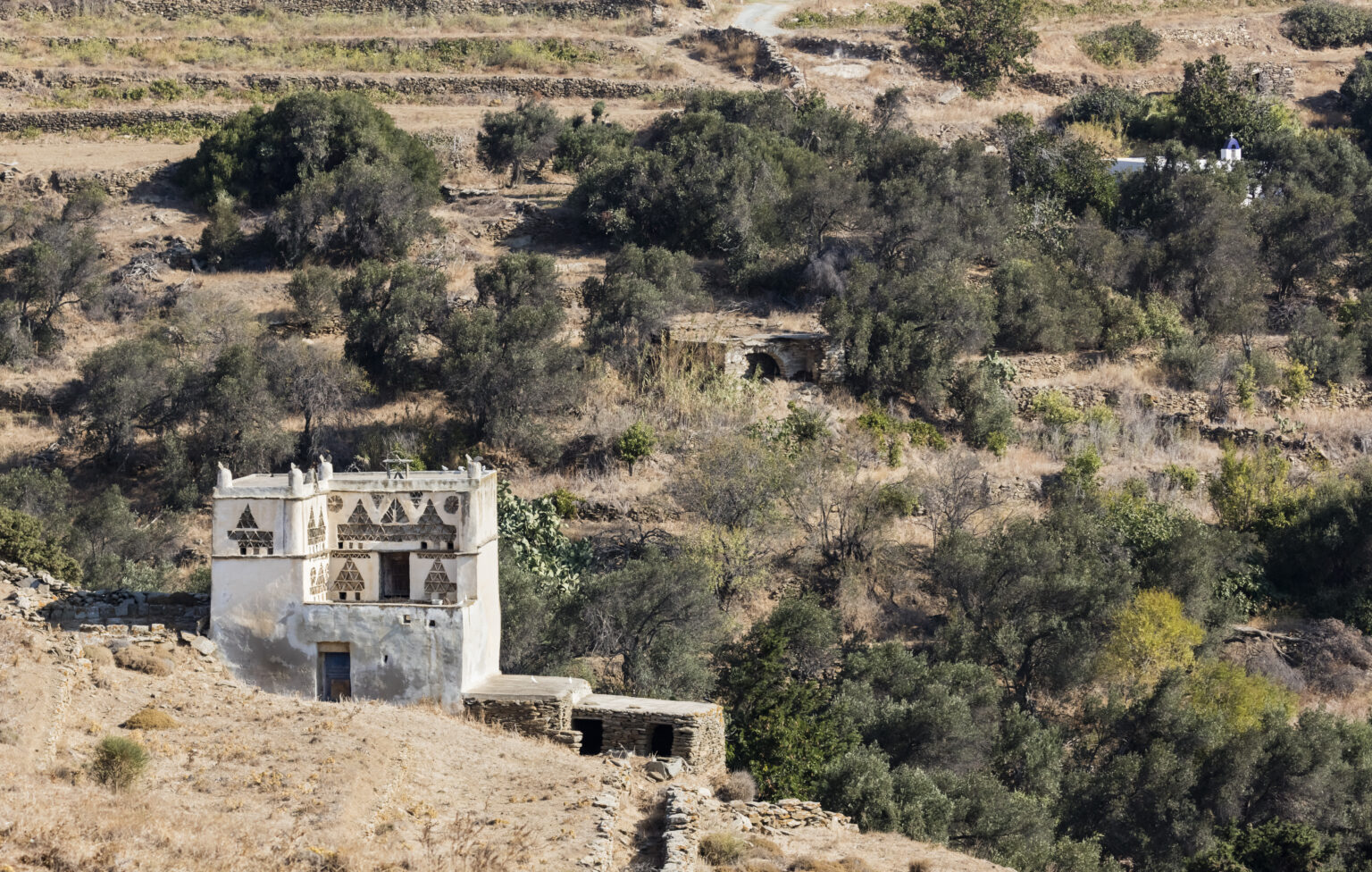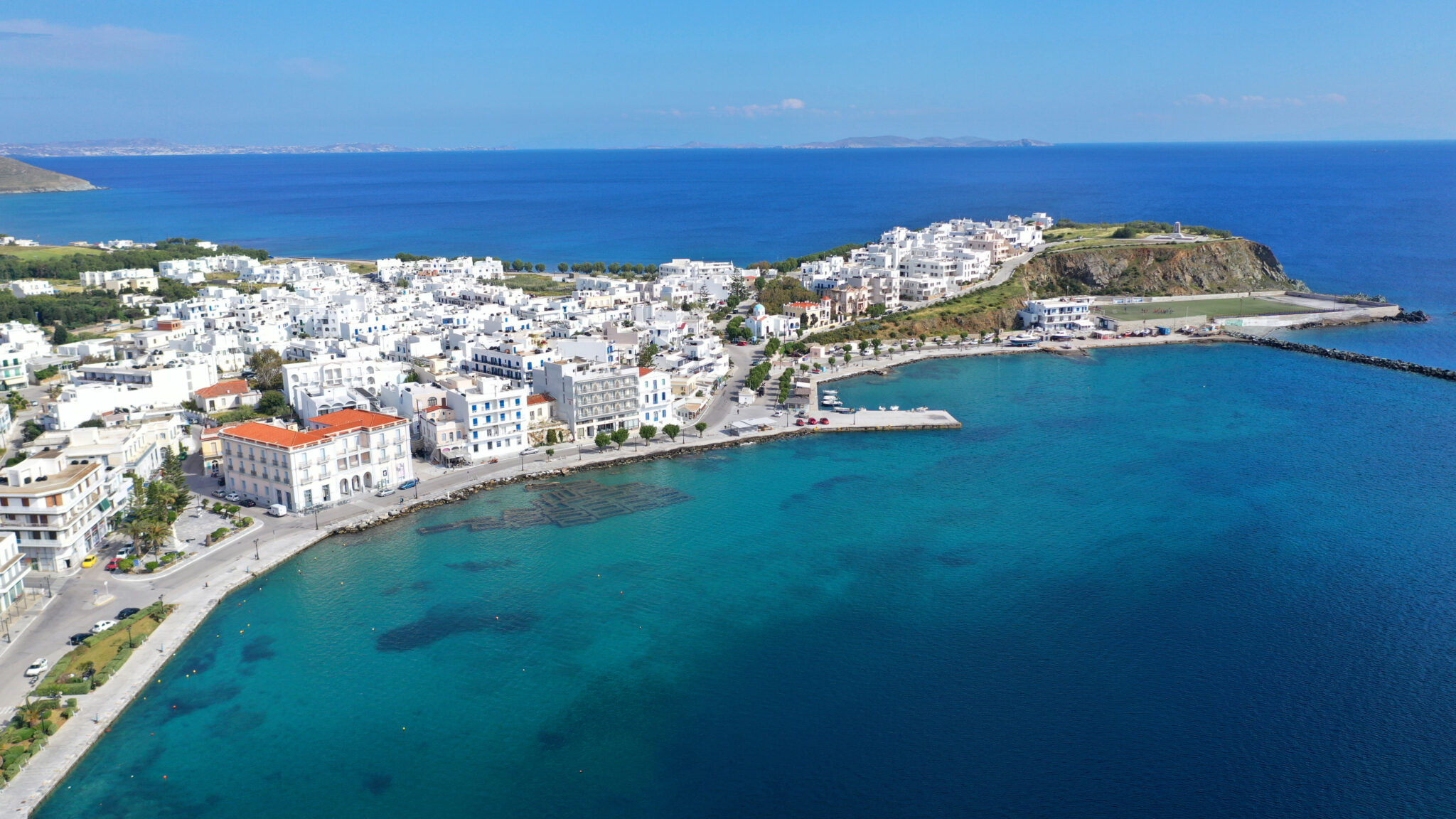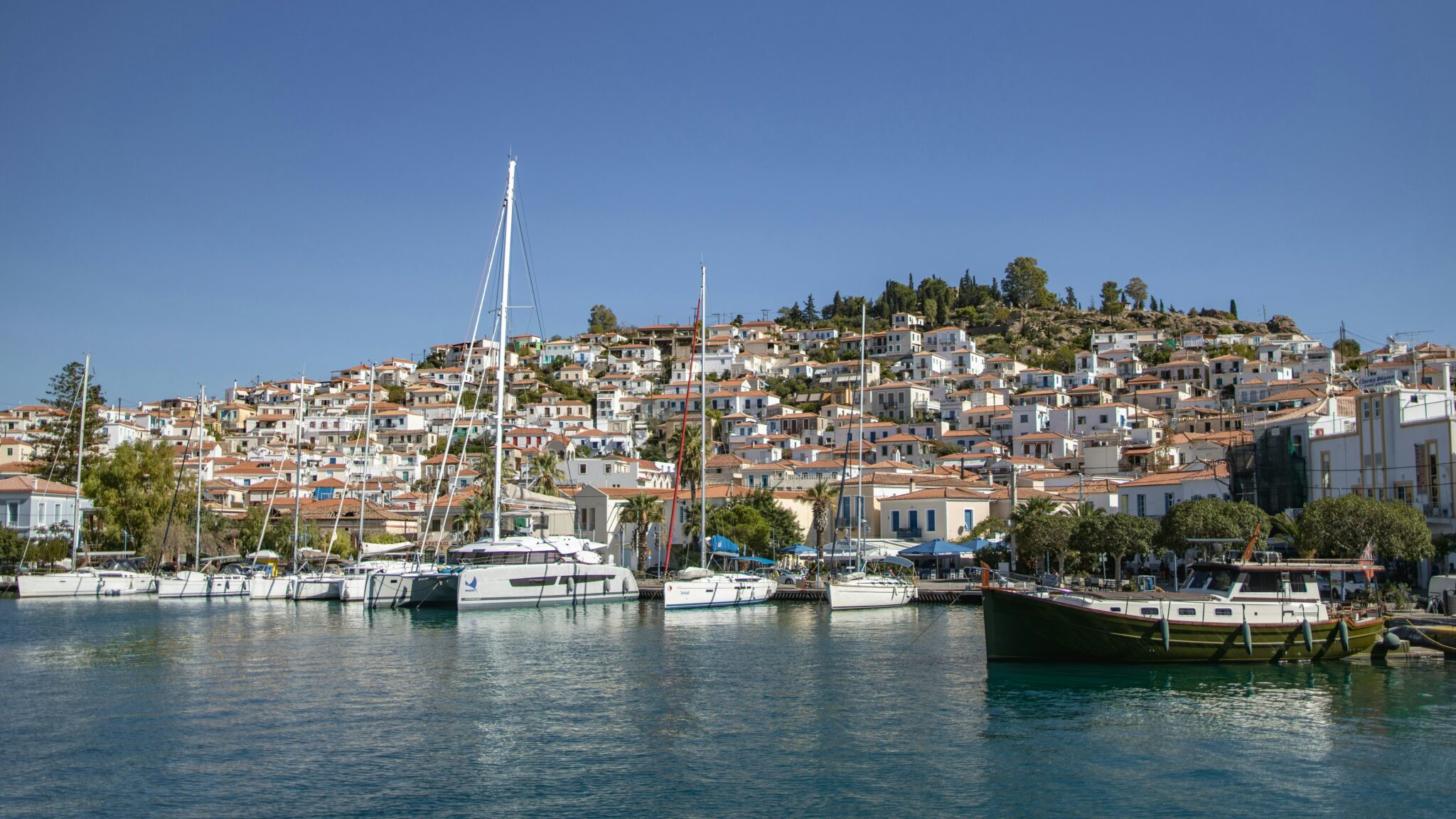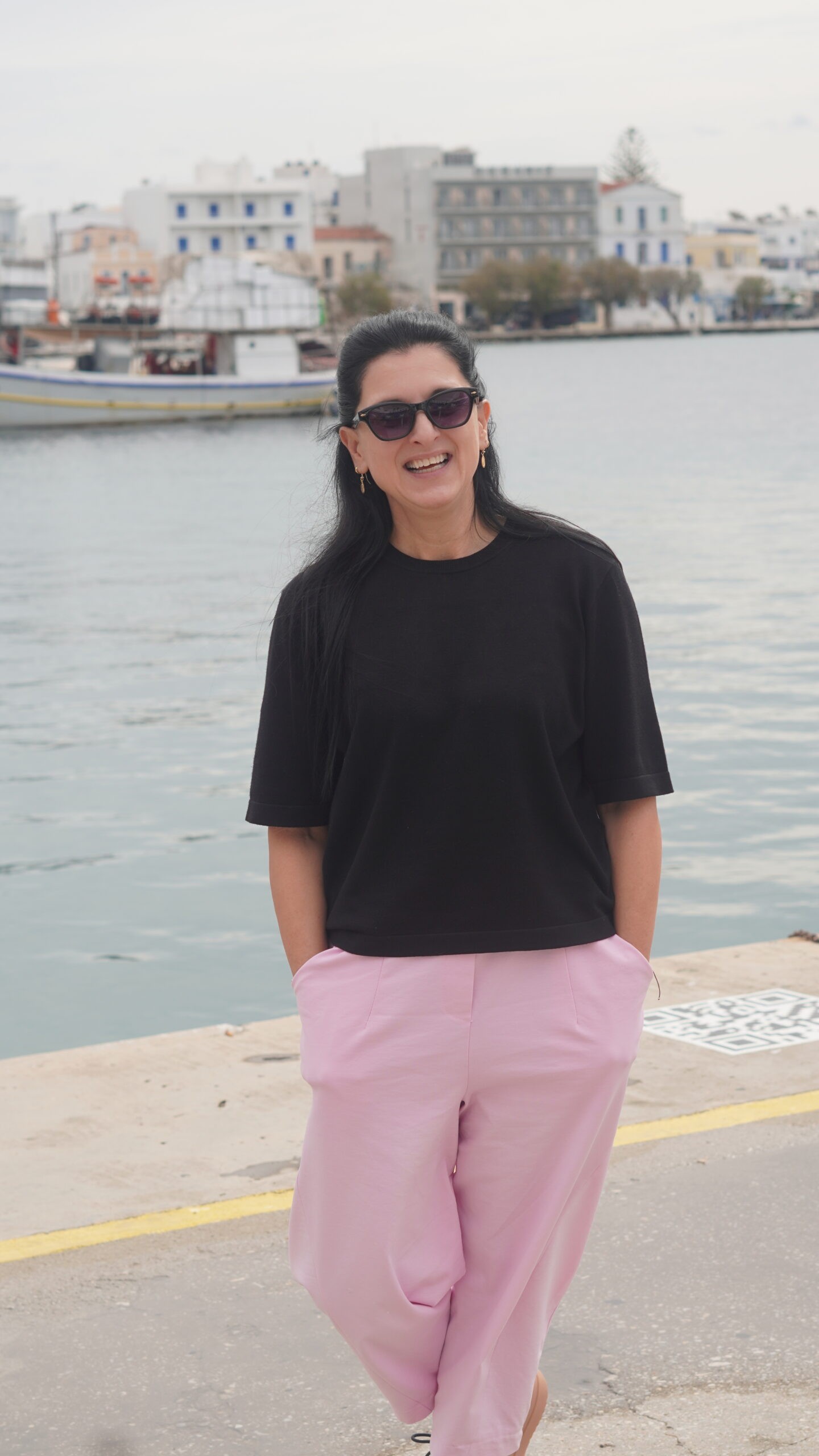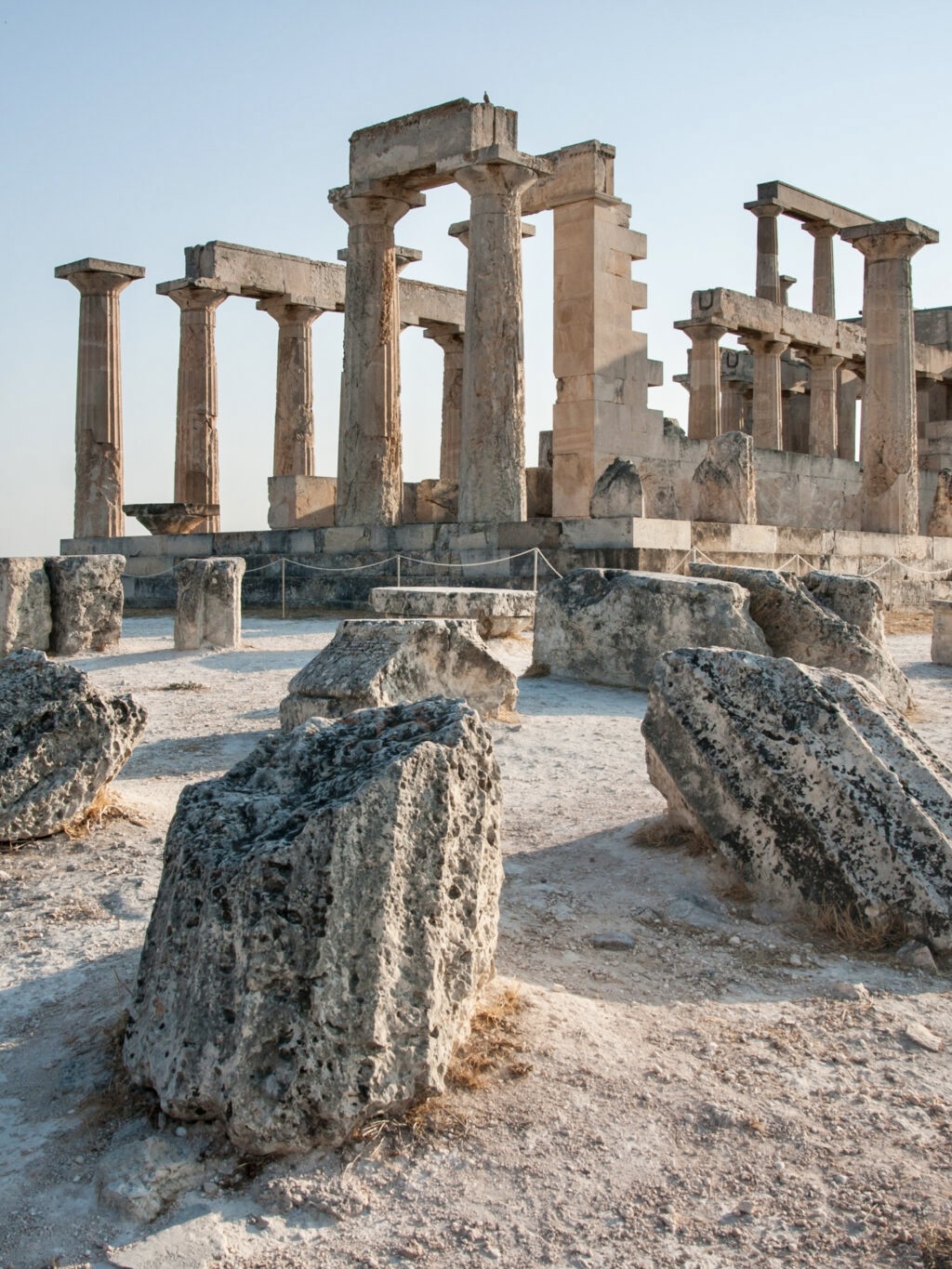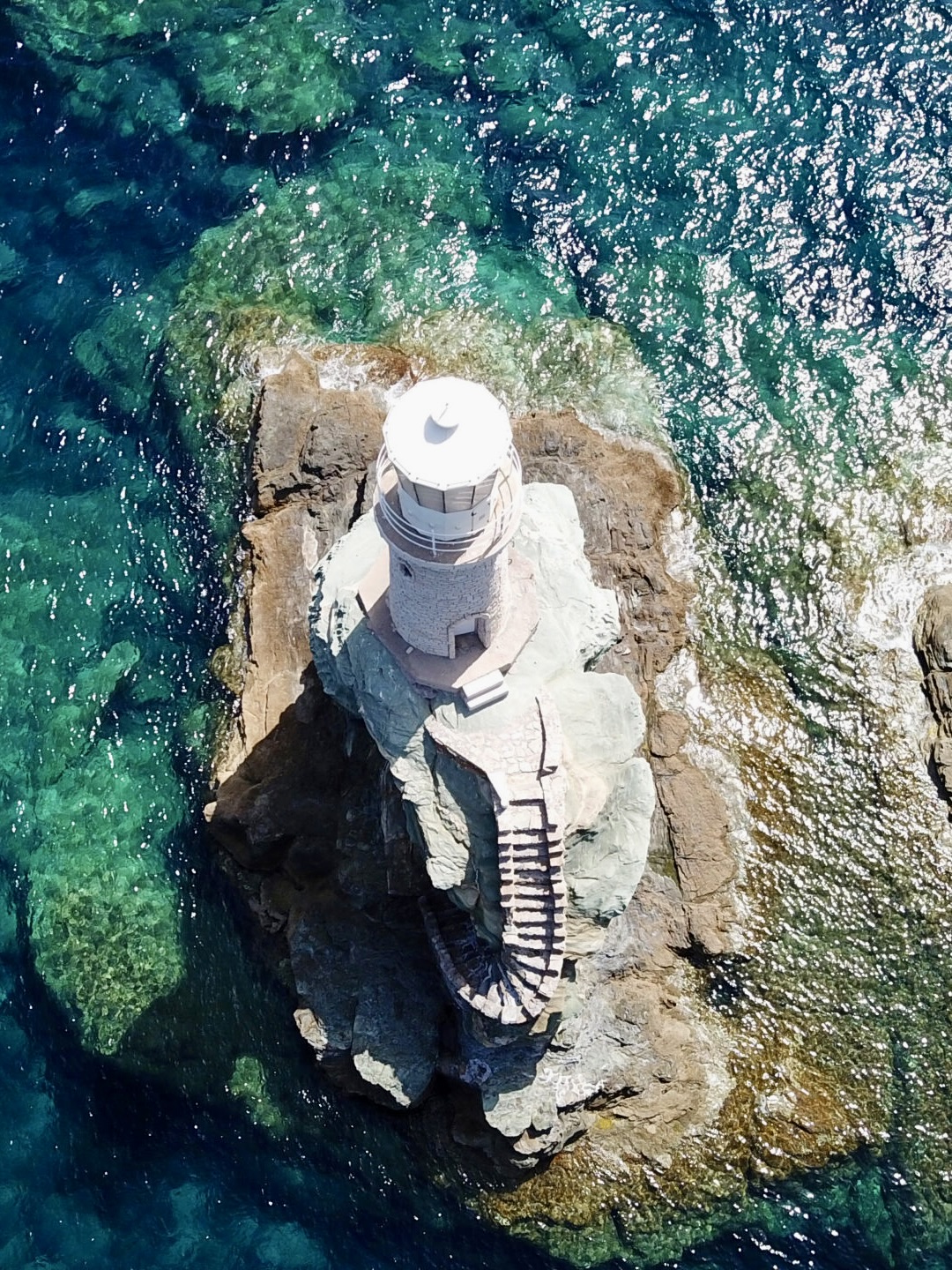For those who travel after the crowds have gone—or who simply refuse to let summer slip away—September in Greece is idyllic.
The sea is still warm, the light more forgiving, the islands quieter, and yet their beauty remains in full bloom. Here are five close-to-Athens escapes that feel made for late-summer wanderings.
Kythnos
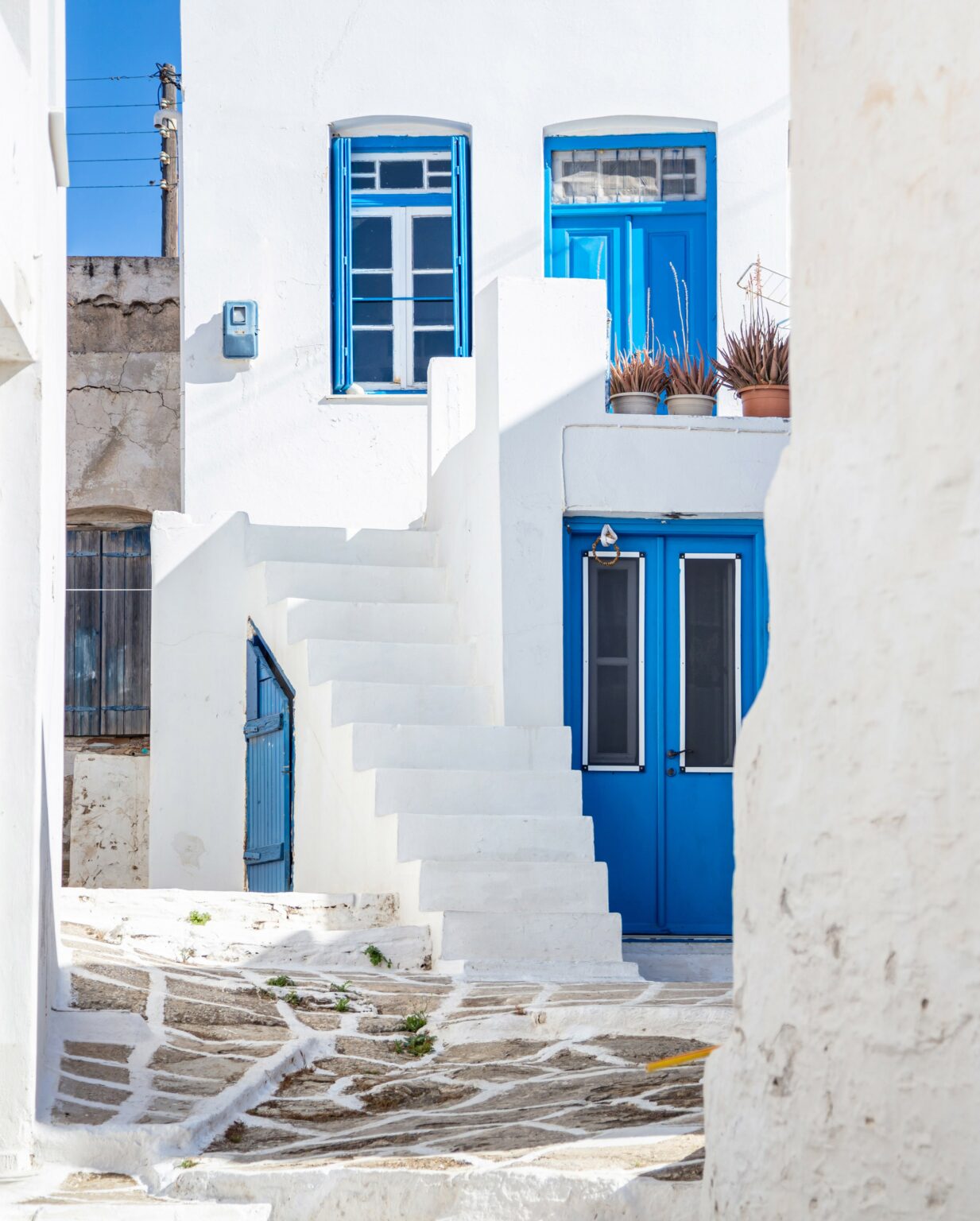

Every few years, a Cycladic island quietly becomes the season’s must-go. Recently, that honor belongs to Kythnos—a little bohemian, rooted in tradition, yet infused with a new cosmopolitan edge. By September, when the rhythm of everyday life begins to return, the island feels more intimate, more authentic. Accommodation is easier to find, prices dip, and the weather is ideal for long walks and unhurried swims.
The beach at Kolona remains Kythnos’ showstopper: a slender sandbar stretching into the Aegean, linking the main island with the islet of Agios Loukas. But you’ll also want to dive into the crystalline waters at Apokrousi, Megali Ammos, Gaidouromantra, and Episkopi. In Loutra, slip into the thermal springs that bubble into the sea—once housed in a 19th-century spa designed by Hansen and later reworked by Ziller, among the earliest wellness resorts in Greece.
Add to your list the cave of Katafiki, tied to Kythnos’ mining past, and the ruins of Vryokastro, the island’s ancient capital, reached by trail. The medieval fortress of Oria, high on a crag and only accessible on foot, is equally haunting. Nearby, the Mesolithic site of Maroulas offers a rare glimpse into prehistoric life on a Greek island.
Syros
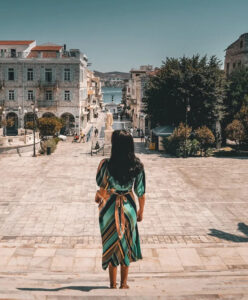
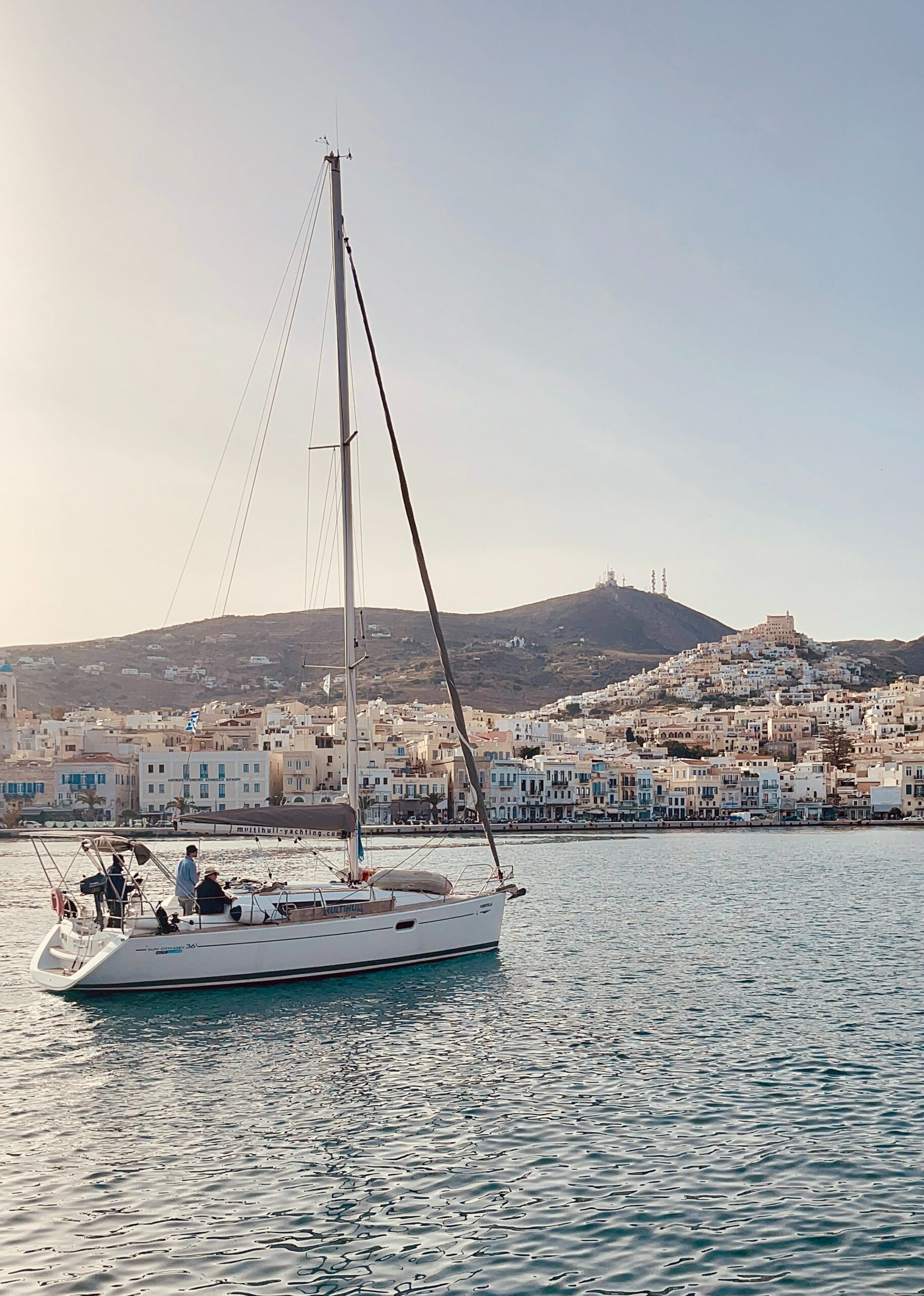
Syros, the aristocratic heart of the Cyclades, takes on a more romantic air after summer’s peak. The neoclassical mansions and marble churches of Ermoupoli shine brighter when the streets are calm. Start at Miaouli Square to admire the grand Town Hall by Ernst Ziller, then wander toward Vaporia, a waterfront neighborhood of captains’ houses and domed churches. Step inside Agios Nikolaos with its intricate marble iconostasis, then walk down to Asteria beach for a swim with a view.
In Ano Syra, the medieval upper town, labyrinthine alleys lead to Catholic San Giorgio and the modest Museum of Markos Vamvakaris, dedicated to the legendary rebetiko musician. Don’t miss the Industrial Museum at the old port, where among other treasures sits the Enfield 8000—the first electric car ever built in Greece.
When it’s time for the sea, the island delivers: Kini for sunsets, Galissas for golden sands, Finikas for laid-back charm, and Varvarousa or Gria Spilia for secluded dips reached only by trail or boat. Come late September, Syros also hosts Animasyros, one of Europe’s top animation festivals.
Andros
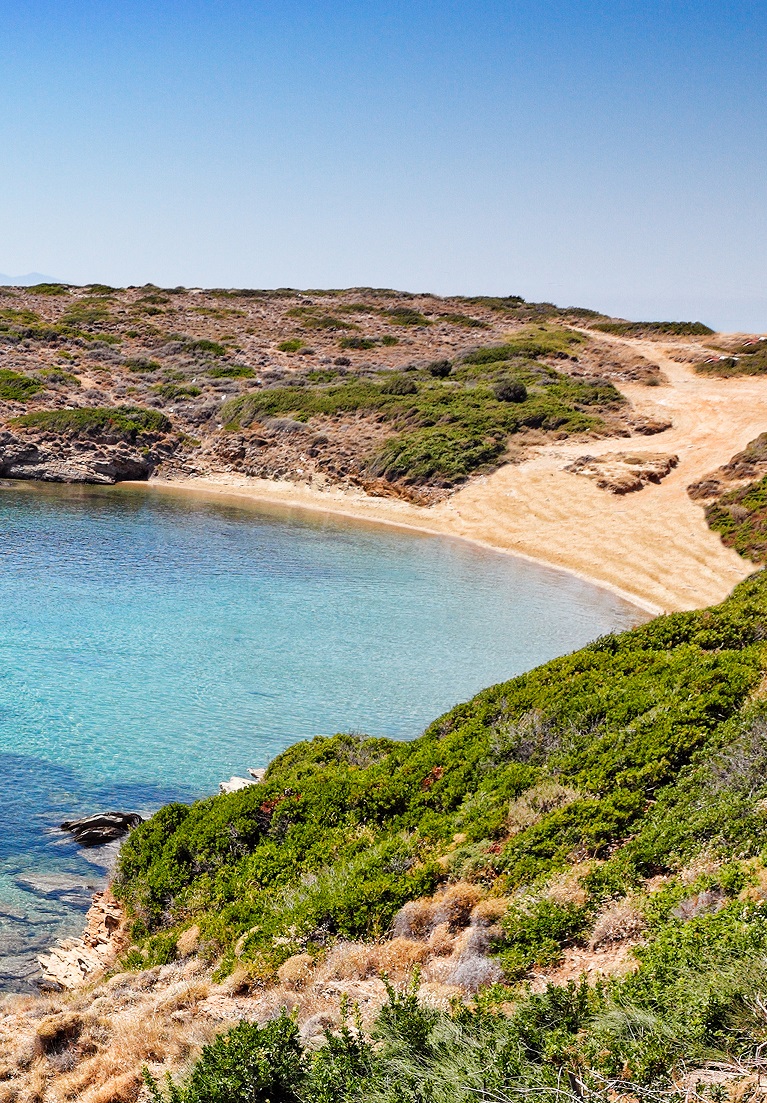

Andros is famed not only for its beaches and refined Chora but also for its vast network of hiking trails, many paved with old stone. September is perfect for exploring: the walk to the Pythara waterfalls near Apoikia is short and lush, while longer hikes thread past watermills, Byzantine bridges, and chapels hidden in ravines.
Where you stay shapes your experience: Batsi hums with life, Korthi offers quiet charm, while Chora, with its marble alleys and neoclassical mansions, radiates old-world elegance.
The beaches are as varied as the landscape: the wide sands of Agios Petros and Chrysi Ammos, the intimate cove of Apothikes, the shaded shore of Fellos, or Achla, where a stream meets the sea. For drama, few spots rival Grias Pidima, with its towering rock column rising from turquoise water.
Art and history run deep here too: the Museum of Contemporary Art of the Basil & Elise Goulandris Foundation brings in major exhibitions, while the Archaeological Museum spans finds from the Neolithic to Byzantine eras. Hikers can also reach the remains of ancient Zagora, a Geometric-period settlement overlooking the sea.
Tinos

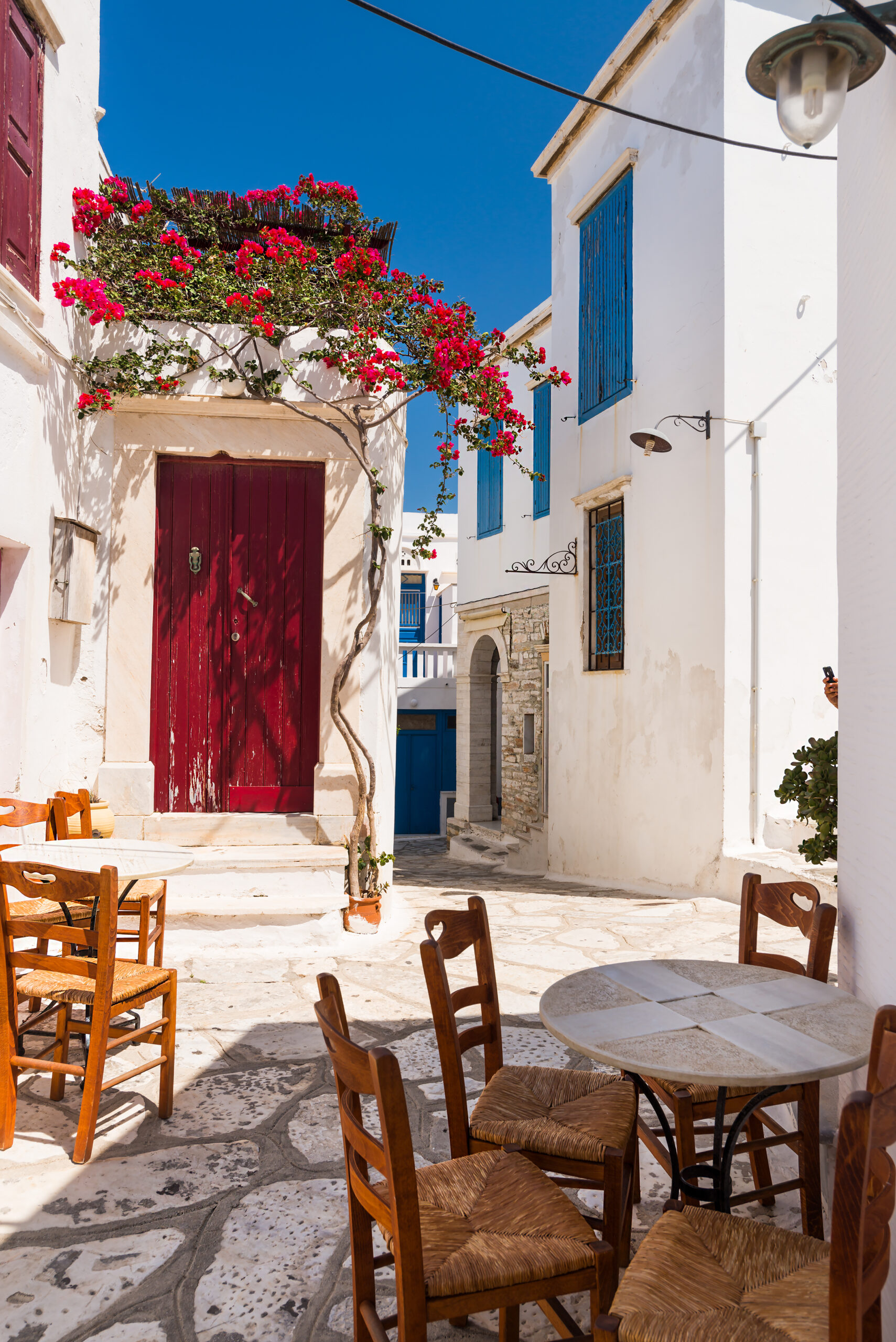
Once synonymous with religious pilgrimage, Tinos today lures travelers for far more: its dazzling villages, imaginative cuisine, sculpted landscapes, and wild beaches. September here is serene but still vibrant, a chance to explore without rush.
The island’s villages are a revelation. Pyrgos, known for its marble artistry, and Volax, built among giant boulders, feel worlds apart. Chora buzzes with whitewashed alleys, while Ormos Kardianis and Panormos promise evenings by the sea.
The beaches are diverse: Kolymbithra, with twin bays of aquamarine, Agios Fokas—the island’s largest—cosmopolitan Kionia, rugged Livada, and remote Agia Thalassa. For flavors, Tinos excels: try tomato fritters, artichoke pie, froutalia (an egg dish with sausage and potatoes), local cheeses like graviera and pungent kopanisti, or sweet xerotigana.
Landmarks include the 1823 Church of Panagia Evangelistria, the Archaeological Museum, and the Museum of Marble Crafts, charting centuries of artistry. Monasteries like Jesuit-founded Loutra and Kechrovouni, perched high on the hills, add a contemplative note to your journey.
Poros

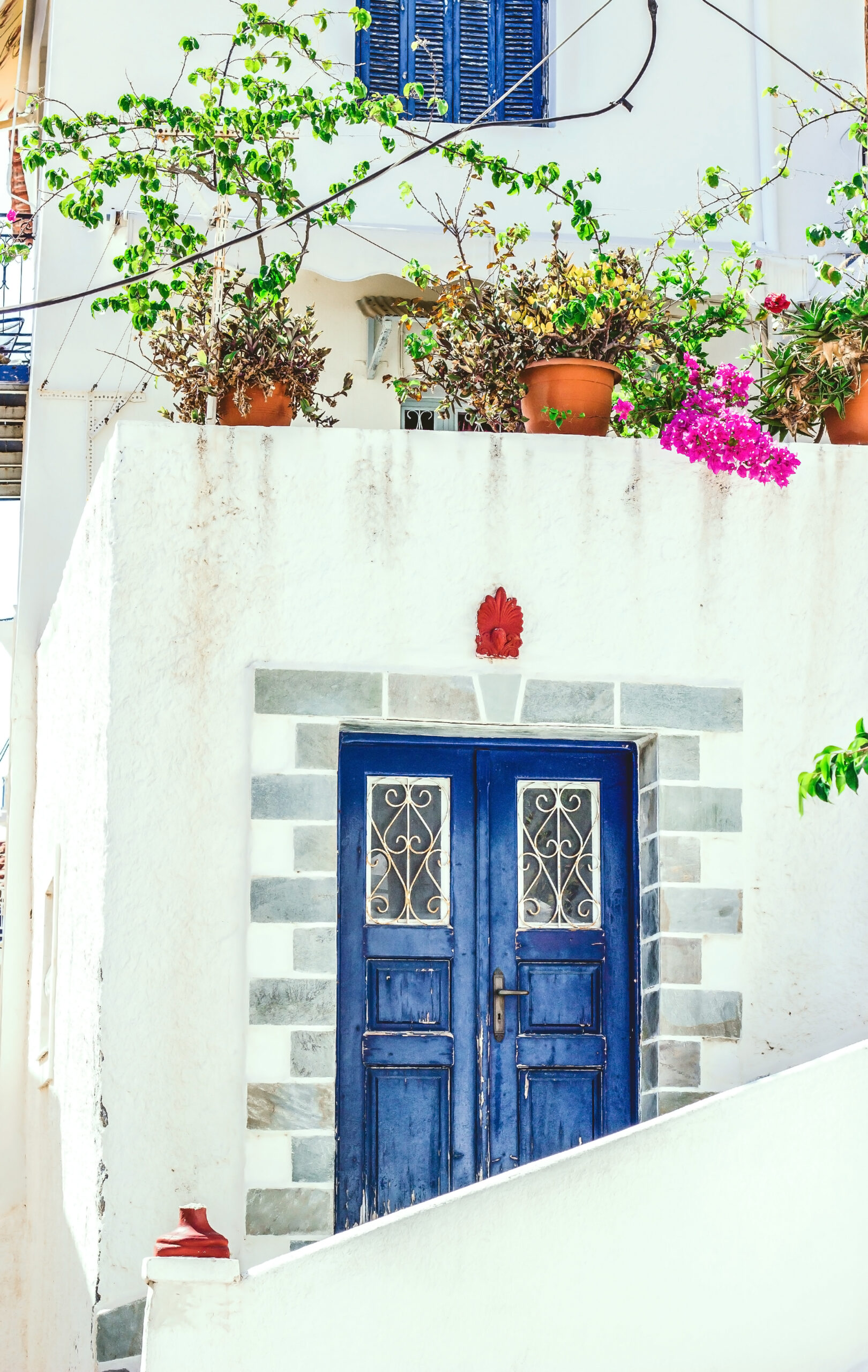
Compact, green, and effortlessly nostalgic, Poros feels like a holiday time capsule—an island that still holds the charm of Greece in the 1980s, all neoclassical houses, shady squares, and a harbor that hums quietly. September brings calm seas and slower rhythms: mornings start with coffee at the waterfront, afternoons with swims, and evenings with strolls to the clocktower at sunset.
For the sea, head to Askeli, Monastiri beach near the monastery of Zoodochos Pigi, Kanali right by town, or Vagionia with its transparent waters. More remote options include Gerolimenas and the Russian Bay, shaded by pines and steeped in history.
If you crave movement, Poros rewards walkers. Trails climb through pine forests, from the Russian Bay to the stone Dana lighthouse, or from Askeli to the sanctuary of Poseidon. Both lead you through a landscape where the scent of resin and sea air is inseparable.



